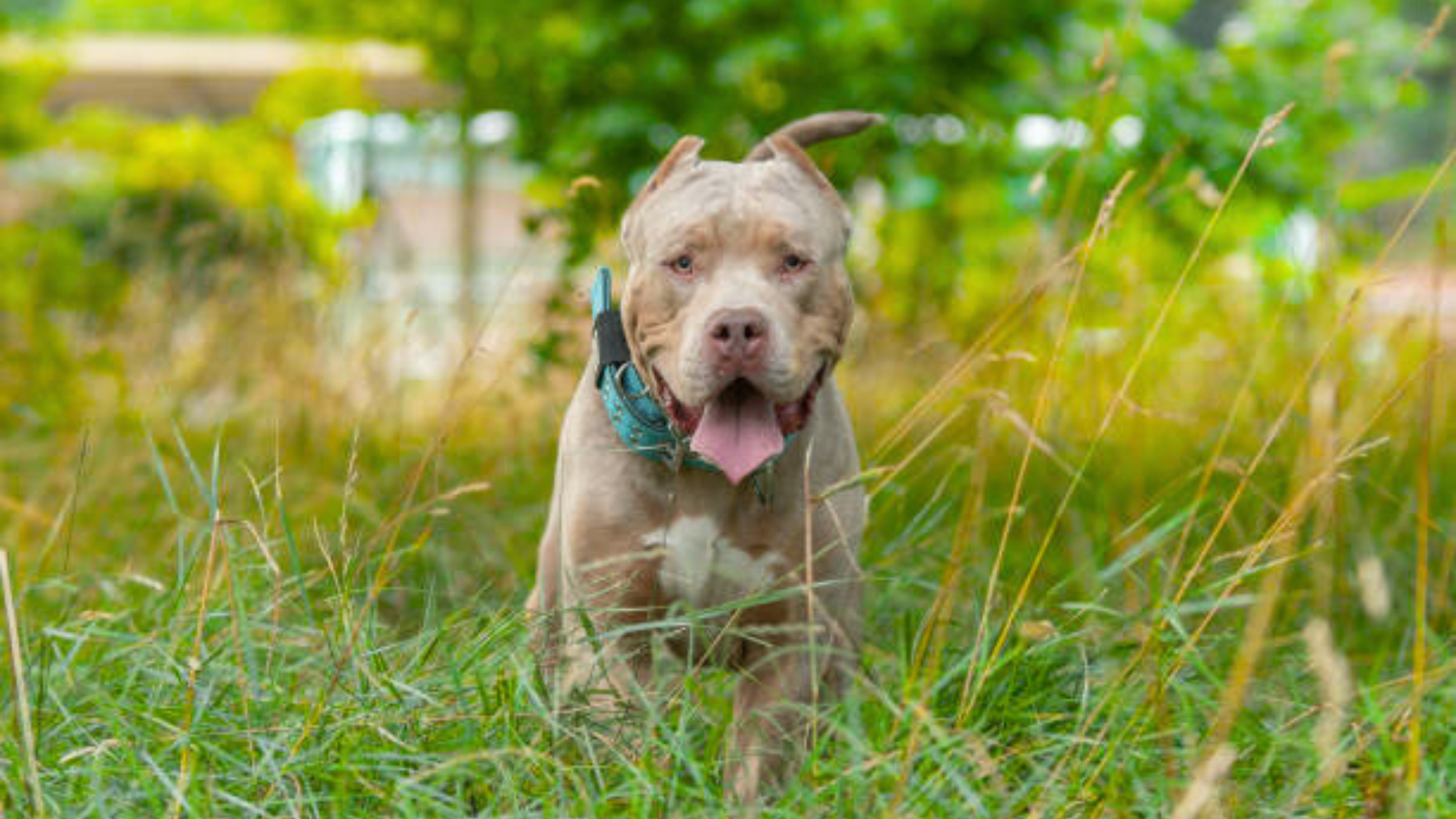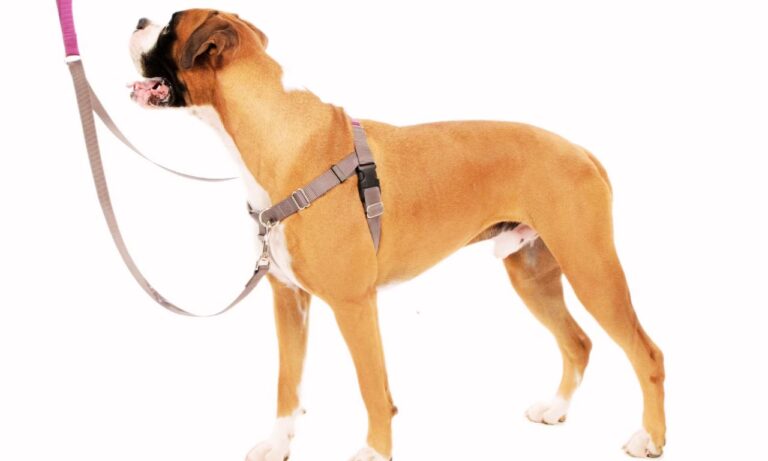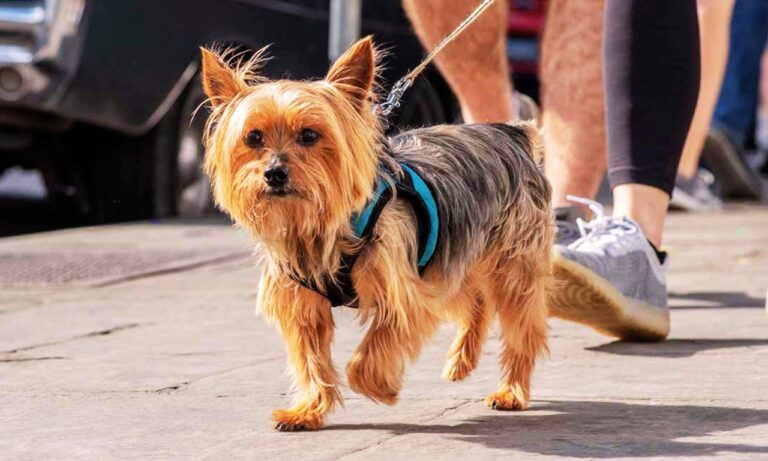| Summary: The XL Bully is bred from the American Bully and larger Mastiff-type breeds, such as the American Bulldog or English Mastiff. This mix enhances size, strength, and temperament, resulting in a muscular yet gentle companion. Breeders focus on selective breeding to maintain the XL Bully’s distinctive build and personality. |
The XL Bully is one of the most powerful and sought-after variations of the American Bully breed. Known for their muscular build, loyal temperament, and protective instincts, XL Bullies are a favorite among dog enthusiasts. However, many people wonder: What two dogs make XL Bully?
The XL Bully is not a naturally occurring breed but rather a product of selective breeding. The two primary breeds that contributed to the development of the XL Bully are the American Pit Bull Terrier and the American Bulldog. Over time, breeders introduced other breeds to enhance size, structure, and temperament, but these two breeds form the foundation of the XL Bully we see today.
Find out what style dog collar is best for hounds to ensure comfort and safety for your furry friend.
I’ll explore the origins of the XL Bully, the role of its parent breeds, and how selective breeding played a role in shaping this powerful and unique dog. The XL Bully is a mix of the American Pit Bull Terrier and various bulldog breeds, bred for size and temperament. GPS dog collars help track their movements during outdoor activities.
Blog Highlights
ToggleThe American Pit Bull Terrier: A Foundation Breed

The American Pit Bull Terrier (APBT) is one of the key breeds used in the development of the XL Bully. With a history dating back to 19th-century England, these dogs were originally bred for bull-baiting and later for dog fighting. However, despite their tough reputation, American Pit Bull Terriers are known for their intelligence, loyalty, and affectionate nature.
1. Physical Characteristics of the American Pit Bull Terrier
The APBT is a medium-sized, muscular dog with a strong jaw, broad head, and short coat. While not as bulky as the XL Bully, they have an athletic and powerful physique. Their build provides the foundation for the XL Bully’s strength and endurance.
- Weight: 15–27 kg (35–60 lbs)
- Height: 43–53 cm (17–21 inches)
- Build: Lean, muscular, and agile
2. Temperament and Behavior
Despite misconceptions, American Pit Bull Terriers are affectionate and friendly dogs. They are eager to please, making them highly trainable. Some of the key temperament traits inherited by the XL Bully from the APBT include:
- Loyalty: They are extremely devoted to their owners.
- Confidence: They carry themselves with a strong and fearless attitude.
- Intelligence: They respond well to training and commands.
- High Energy Levels: Pit Bulls require regular exercise and mental stimulation.
These personality traits make the APBT an excellent foundation breed for creating a well-balanced and intelligent companion like the XL Bully.
The ideal size collar for English Springer Spaniel typically ranges from 14 to 20 inches, depending on the dog’s age and neck size, ensuring a comfortable and secure fit.
The American Bulldog: Adding Size and Strength
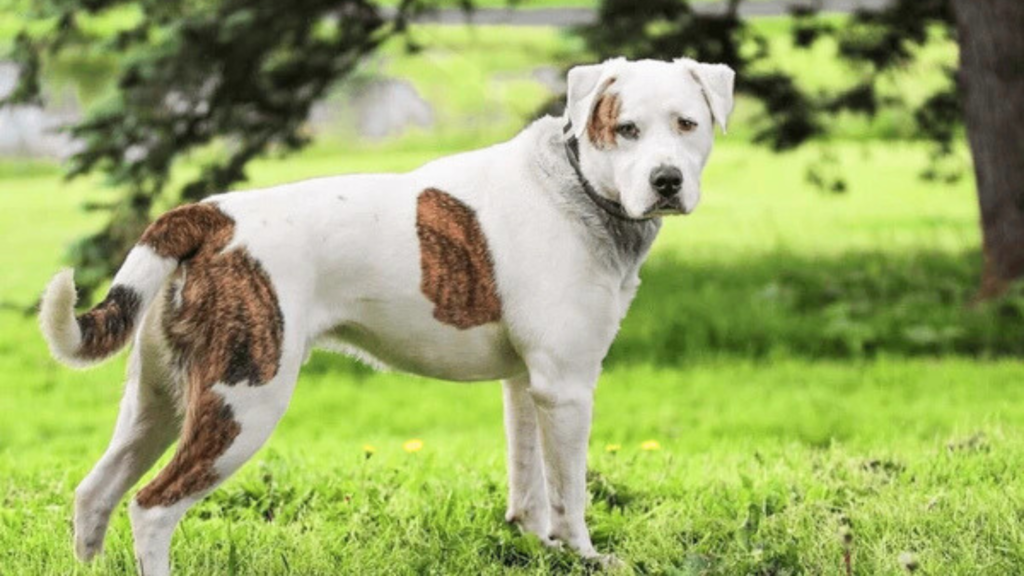
The American Bulldog is the second foundational breed that contributed to the XL Bully’s development. Unlike the APBT, which was bred for agility and tenacity, the American Bulldog was primarily used for farm work, guarding, and hunting.
1. Physical Characteristics of the American Bulldog
The American Bulldog is a large, muscular dog with a stockier build than the APBT. They were bred for power and endurance, making them well-suited for heavy tasks such as herding cattle and protecting property.
- Weight: 32–54 kg (70–120 lbs)
- Height: 50–71 cm (20–28 inches)
- Build: Thick, muscular, and robust
When mixed with the American Pit Bull Terrier, the American Bulldog contributes to the larger size and bulk of the XL Bully. This is why XL Bullies have a broader chest, thicker bones, and a more dominant stance compared to standard American Bullies.
American Bullies, including the XL variety, were developed by crossing American Pit Bull Terriers with American Bulldogs, Mastiffs, and other strong breeds. Pet tech products like smart feeding monitors help manage their growth.
2. Temperament and Behavior
American Bulldogs are naturally protective and alert. Their temperament played a significant role in shaping the XL Bully’s strong yet affectionate personality. Some inherited traits include:
- Protectiveness: They have strong guarding instincts, making them excellent family protectors.
- Gentle with Family: Despite their size, they are known to be affectionate with children.
- Courageous: They are not easily intimidated and will stand their ground if necessary.
- Loyalty: They form strong bonds with their owners and families.
By combining the intelligence and agility of the American Pit Bull Terrier with the strength and size of the American Bulldog, breeders were able to create the ideal XL Bully—a powerful yet family-friendly breed.
The recommended size collar for an English Cocker Spaniel usually ranges from 12 to 18 inches, providing a snug and comfortable fit for your dog.
The Role of Selective Breeding in Creating the XL Bully
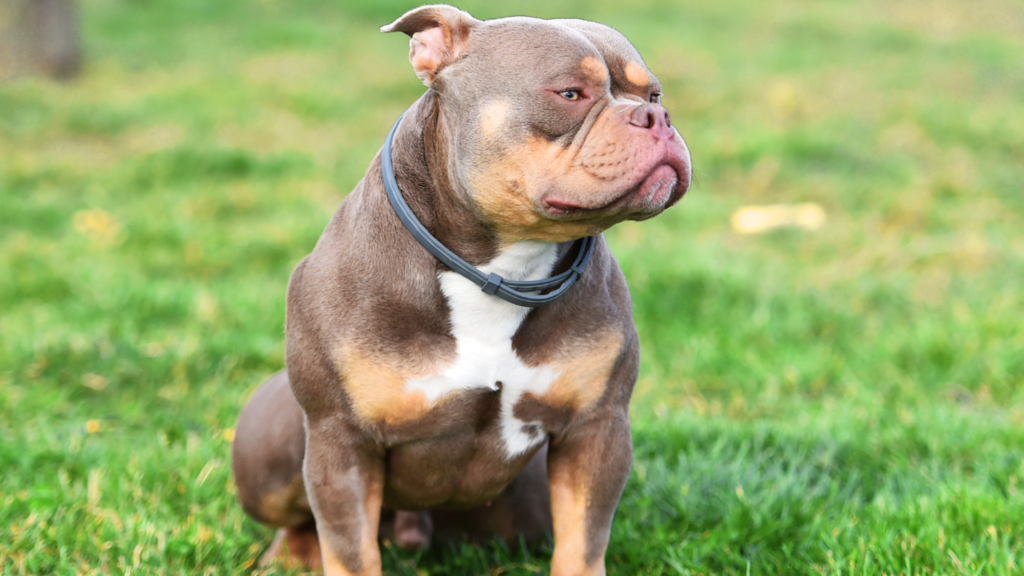
While the American Pit Bull Terrier and American Bulldog form the foundation of the XL Bully, selective breeding played a crucial role in shaping the breed’s modern-day characteristics.
1. Enhancing Size and Muscularity
Breeders selectively chose the largest and most muscular individuals from each breed to create the XL Bully. Over multiple generations, this led to a distinct bloodline that prioritized size and bulk without sacrificing agility or temperament.
2. Refining Temperament
Unlike the Pit Bull’s historical association with dog fighting, XL Bullies were bred specifically for companionship and loyalty. Breeders worked on eliminating aggressive tendencies while maintaining protective instincts, making the XL Bully a well-balanced family pet.
3. Improving Structure and Health
Early American Bullies had exaggerated features such as overly short muzzles and thick bodies, which could lead to breathing and joint issues. Through careful breeding, XL Bullies were refined to have a more proportionate structure, improving their overall health and mobility.
To find the perfect fit, learn more about what size collar for a Bichon, ensuring your dog’s comfort and safety.
Are Other Breeds Used in the XL Bully?
While the American Pit Bull Terrier and American Bulldog are the primary foundation breeds, some breeders have introduced other breeds to refine the XL Bully. The XL Bully retains the muscular build of a Pit Bull but has a bulkier frame and a calmer temperament. Electronic dog collars assist in reinforcing positive behaviors.
These may include:
1. English Bulldog
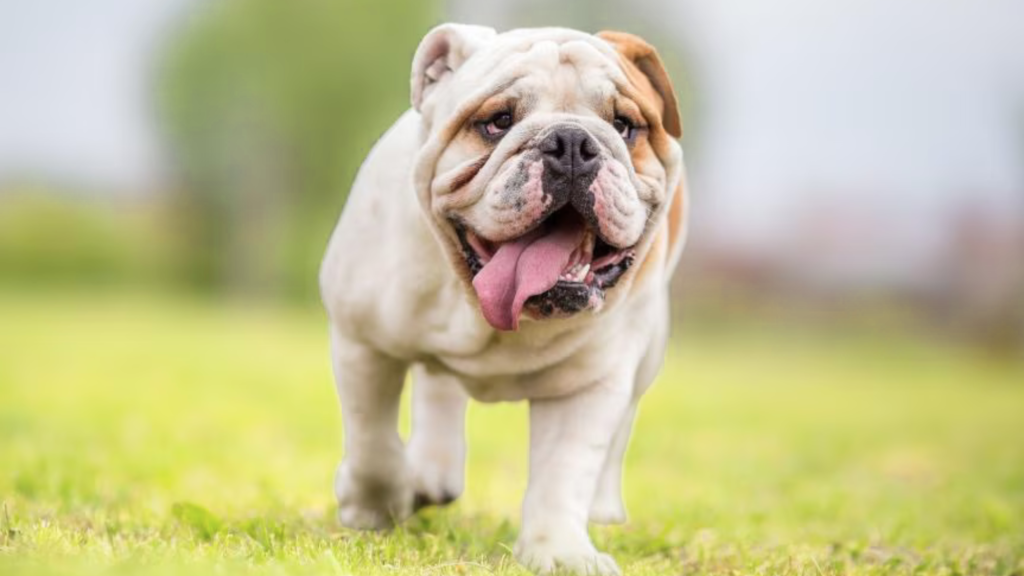
- Contributed to the breed’s stocky build and broad chest.
- Helped in refining facial features, making them more expressive.
- However, English Bulldogs have a history of breathing issues, so excessive mixing is avoided.
2. Mastiff Breeds (Cane Corso, Neapolitan Mastiff, or Bullmastiff)
- Introduced to add further bulk and strength.
- Some XL Bullies have Mastiff-like features, such as looser skin or a more pronounced head structure.
3. Olde English Bulldogge

- Used in some bloodlines to improve the breed’s endurance and overall strength.
- Known for their muscular frame and stamina.
While these additional breeds contributed to some bloodlines, the American Pit Bull Terrier and American Bulldog remain the two main breeds responsible for the XL Bully’s origin.
Differences Between an XL Bully and Other Bully Breeds
XL Bullies are just one category within the American Bully breed family. To better understand how they compare, let’s look at key differences between the XL Bully and other American Bully variations.
| Bully Type | Height | Weight | Build |
| Pocket Bully | Under 17 inches | 11–22 kg (25–50 lbs) | Compact, muscular |
| Standard Bully | 17–20 inches | 20–35 kg (45–75 lbs) | Well-muscled, medium size |
| XL Bully | 20–23 inches | 35–65 kg (80–150 lbs) | Large, powerful build |
The main difference between an XL Bully and other American Bullies is size. XL Bullies are the largest variety, weighing significantly more and standing taller than their counterparts. Discover the ideal option by exploring what is the best collar material for a Bichon Frise to ensure your pet’s comfort and durability.
How the American Pit Bull Terrier Shapes the XL Bully
The American Pit Bull Terrier (APBT) is one of the key foundation breeds responsible for the development of the XL Bully. Known for its intelligence, agility, and unwavering loyalty, the APBT contributed many traits that make the XL Bully an impressive companion and protector.
To fully understand the role of the American Pit Bull Terrier in the XL Bully’s creation, we must examine its history, physical traits, temperament, and how it influenced the XL Bully’s overall development.
The History of the American Pit Bull Terrier
The American Pit Bull Terrier has a long and complex history dating back to the 19th century. It was originally bred in England, Scotland, and Ireland by crossing Old English Bulldogs with terriers. This combination resulted in a breed that was strong, tenacious, and highly trainable.
In the early days, APBTs were used for bull-baiting, a brutal sport where dogs were pitted against bulls. When bull-baiting was banned, they were used in illegal dog fighting rings. Despite this violent past, well-bred Pit Bulls are affectionate, intelligent, and friendly when raised in a loving environment.
The APBT was later brought to the United States, where it was used as a working farm dog, hunting companion, and family guardian. Over time, the breed developed a reputation for being both a fierce protector and a loving family dog.
These traits were crucial in the development of the XL Bully, as breeders sought a dog with the intelligence and drive of the APBT but with a larger, more muscular build.
How the APBT Influenced the XL Bully’s Physical Traits
The American Pit Bull Terrier has a lean, athletic build that contributes significantly to the XL Bully’s overall structure. While the XL Bully is larger and more muscular, the APBT provides the strong bone structure and compact muscularity that makes the XL Bully a powerful breed.
Key Physical Traits Passed to the XL Bully
- Muscular Frame – APBTs are naturally strong and agile. This foundation allowed breeders to selectively enhance the XL Bully’s muscle mass and bone density.
- Broad Head & Strong Jaw – The XL Bully inherits the APBT’s distinct head shape, which contributes to its powerful bite force.
- Short Coat – The smooth, short coat of the APBT was passed down to the XL Bully, making grooming easy and low-maintenance.
- Agility & Stamina – Despite being heavier, the XL Bully retains some of the APBT’s agility, making it capable of quick movements and bursts of speed.
These traits create a dog that is both powerful and agile, allowing the XL Bully to be a well-balanced breed that excels in various roles, from family protector to competition dog.
Selective breeding has resulted in a loyal and affectionate companion dog, but proper training is necessary to manage their strength. Dog training equipment helps develop their discipline and obedience.
The American Pit Bull Terrier’s Impact on XL Bully Temperament
One of the most valuable contributions of the APBT to the XL Bully is its temperament. Despite the negative stereotypes surrounding Pit Bulls, they are known for being loyal, affectionate, and highly trainable.
Temperament Traits Passed to the XL Bully
- Loyalty & Devotion – APBTs form strong bonds with their owners, a trait that is evident in XL Bullies. They are protective but loving, making them ideal companions.
- High Intelligence – The APBT is a highly intelligent breed, which means XL Bullies are easy to train and respond well to positive reinforcement.
- Confidence & Fearlessness – APBTs are known for their confidence. This makes the XL Bully a strong-willed but obedient dog when trained properly.
- Playfulness & Affection – Despite their intimidating appearance, both APBTs and XL Bullies are known to be affectionate with their families and enjoy playtime, cuddles, and interaction with children.
The influence of the APBT on the XL Bully’s personality ensures that these dogs are not only powerful and protective but also family-friendly and affectionate.
Why the APBT Was Chosen for XL Bully Breeding
Breeders selectively chose the American Pit Bull Terrier because of its exceptional drive, work ethic, and companionship qualities. While the APBT itself is a strong breed, breeders wanted a dog with a bulkier frame, more muscle mass, and a calmer temperament. By combining the APBT with larger breeds, they were able to create the XL Bully, a dog with all the positive traits of an APBT but without the historical aggression associated with dog fighting lines.
The XL Bully remains one of the most intelligent and loyal breeds today, thanks to the strong influence of the American Pit Bull Terrier in its lineage.
The American Staffordshire Terrier’s coat type is short, sleek, and easy to maintain with regular brushing.
Final Thoughts: What Two Dogs Make XL Bully?
The XL Bully is a carefully crafted breed developed from two primary breeds: the American Pit Bull Terrier and the American Bulldog.
- The American Pit Bull Terrier contributed intelligence, agility, and drive.
- The American Bulldog added size, strength, and protective instincts.
- Through selective breeding, the XL Bully was refined to be larger, stronger, and more balanced in temperament than its ancestors.
Today, the XL Bully is a loyal, affectionate, and powerful companion. Whether as a family protector, a working dog, or simply a loving pet, the XL Bully embodies the best traits of its parent breeds while standing out as a unique and distinct breed of its own. Hope so, now you know what two dogs make XL bully.
The best collar size for an American Staffordshire Terrier ensures a comfortable and secure fit for your dog during walks and training.

